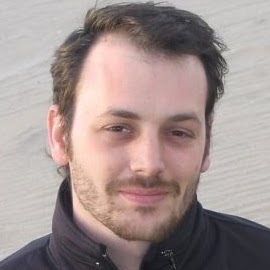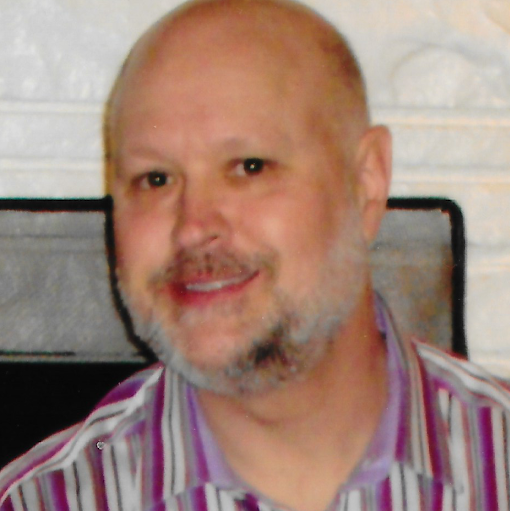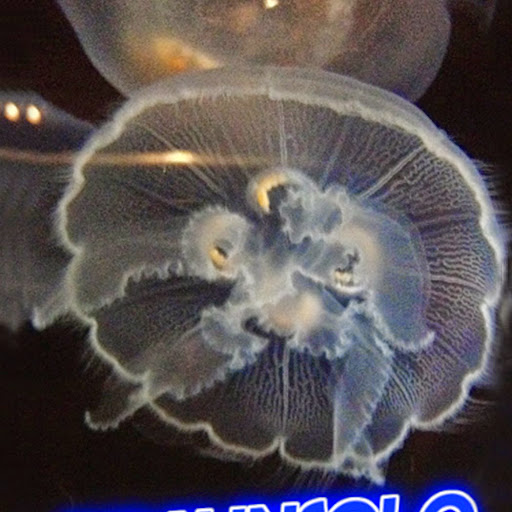Alan M Braun
age ~57
from Princeton, NJ
- Also known as:
-
- Alan Michael Braun
- Alan Brown
- Alan B Rown
- Allen Braun
- Alan Draun
- Phone and address:
-
42 Cuyler Rd, Princeton, NJ 08540
(609)9471485
Alan Braun Phones & Addresses
- 42 Cuyler Rd, Princeton, NJ 08540 • (609)9471485
- Lawrenceville, NJ
- Villisca, IA
- 107 Louis St, New Brunswick, NJ 08901 • (732)5458547
- Ann Arbor, MI
Work
-
Company:Genesee country village & museum2012
-
Position:Director of development - corporate & major giving
Education
-
School / High School:CITY UNIVERSITY OF NEW YORK, LEHMAN COLLEGE- Bronx, NY2012
-
Specialities:Bachelor of Science in Music Education
Us Patents
-
Wavelength Selective Optical Add/Drop Multiplexer And Method Of Manufacture
view source -
US Patent:6665476, Dec 16, 2003
-
Filed:Aug 2, 2001
-
Appl. No.:09/920795
-
Inventors:Alan Michael Braun - New Brunswick NJ
Joseph Hy Abeles - East Brunswick NJ
Robert Amantea - Manalapan NJ -
Assignee:Sarnoff Corporation - Princeton NJ
-
International Classification:G02B 626
-
US Classification:385 50, 385 14, 385 24, 385 27, 398 82, 398 42, 398 45, 398 48
-
Abstract:One embodiment of the present invention is an exemplary wavelength selective optical coupling device. This exemplary device includes two waveguides, a ring or disc resonator, and resonator coupling elements. The waveguides are disposed on top of a substrate, not in contact with each other. The waveguides may transmit multiple wavelengths of light. The ring or disc resonator includes a dielectric member which extends parallel to the top of the substrate and overlaps, without contacting, the waveguides. The resonator is sized to resonate at a subset of resonant wavelengths. The resonator coupling elements couple the resonator to the substrate. The resonator coupling elements may include a bridge coupled to the top surface of the substrate and electrically coupled to control circuitry within the substrate. A waveguide coupling signal from the control circuitry causes the bridge to deform, translating the resonator up and down, thereby intermittently coupling and decoupling the waveguides.
-
Compact, High-Power, Low-Jitter, Semiconductor Modelocked Laser Module
view source -
US Patent:7164699, Jan 16, 2007
-
Filed:Jun 1, 2004
-
Appl. No.:10/859553
-
Inventors:Alan Michael Braun - Lawrenceville NJ, US
Joseph H. Abeles - East Brunswick NJ, US
Martin H. Kwakernaak - New Brunswick NJ, US
Viktor Borisovitch Khalfin - Hightstown NJ, US -
Assignee:Sarnoff Corporation - Princeton NJ
-
International Classification:H01S 3/13
-
US Classification:372 29022
-
Abstract:A low-jitter optical pulse source including: a monolithic waveguide including a first section substantially perpendicular to a first facet and a second section being curved and substantially non-perpendicular to a second facet; and, an optical circulator coupled to the monolithic waveguide and forming a sigma cavity in combination with the monolithic waveguide, wherein the first facet forms a sole reflector for the sigma cavity.
-
Anodically Bonded Cell, Method For Making Same And Systems Incorporating Same
view source -
US Patent:7400207, Jul 15, 2008
-
Filed:Jan 5, 2005
-
Appl. No.:11/030009
-
Inventors:Steven Alan Lipp - West Windsor NJ, US
Joseph H. Abeles - East Brunswick NJ, US
Alan Michael Braun - Lawrenceville NJ, US
Sterling Eduard McBride - Princeton NJ, US
John P. Riganati - Skillman NJ, US
Peter J. Zanzucchi - Princeton Junction NJ, US -
Assignee:Sarnoff Corporation - Princeton NJ
-
International Classification:H01S 1/06
-
US Classification:331 941, 331 3
-
Abstract:A cell suitable for use with an atomic clock and a method for making the same, the cell including: a silicon wafer having a recess formed therein; at least one amorphous silicate member having an ion mobility and temperature expansion coefficient approximately that of silicon sealing the recess; and, an alkali metal containing component and buffer gas contained in the recess. The method includes: providing a silicon wafer; forming a cavity through the silicon wafer; introducing an alkali metal containing component and buffer gas into the cavity; and, anodically bonding at least one amorphous silicate member having an ion mobility and temperature expansion coefficient approximately that of silicon to the wafer to close the cavity.
-
Batch-Fabricated, Rf-Interrogated, End Transition, Chip-Scale Atomic Clock
view source -
US Patent:7468637, Dec 23, 2008
-
Filed:Apr 18, 2007
-
Appl. No.:11/736657
-
Inventors:Alan Michael Braun - Lawrenceville NJ, US
Joseph Hy Abeles - East Brunswick NJ, US
Winston Kong Chan - Princeton NJ, US
Martin Kwakernaak - New Brunswick NJ, US
Timothy James Davis - Columbus NJ, US -
Assignee:Sarnoff Corporation - Princeton NJ
-
International Classification:H01S 1/06
H03L 7/26 -
US Classification:331 941, 331 3
-
Abstract:A chip scale atomic clock is disclosed that provides a low power atomic time/frequency reference that employs direct RF-interrogation on an end-state transition. The atomic time/frequency reference includes an alkali vapor cell containing alkali atoms, preferably cesium atoms, flex circuits for physically supporting, heating, and thermally isolating the alkali vapor cell, a laser source for pumping alkali atoms within the alkali vapor cell into an end resonance state by applying an optical signal along a first axis, a photodetector for detecting a second optical signal emanating from the alkali vapor cell along the first axis, a pair of RF excitation coils for applying an RF-interrogation signal to the alkali atoms along a second axis perpendicular to the first axis, a pair of bias coils for applying a uniform DC magnetic field along the first axis, and a pair of Zeeman coils for applying a Zeeman interrogation signal to the alkali atoms and oriented and configured to apply a time-varying magnetic field along the second axis through the alkali vapor cell. Another flex circuit is used for physically supporting the laser source, for heating the laser source, and for providing thermal isolation of the laser source. The laser source can be a vertical cavity surface emitting laser (VSCEL).
-
High Power Diode Laser Based Source
view source -
US Patent:7477670, Jan 13, 2009
-
Filed:May 27, 2005
-
Appl. No.:11/140602
-
Inventors:Joseph H. Abeles - Middlesex NJ, US
Alan M. Braun - Lawrenceville NJ, US
Viktor Borisovitch Khalfin - Hightstown NJ, US
Martin H. Kwakernaak - New Brunswick NJ, US
Ramon U. Martinelli - Hightstown NJ, US
Hooman Mohseni - Wilmette IL, US -
Assignee:Sarnoff Corporation - Princeton NJ
-
International Classification:H01S 5/00
-
US Classification:372 5012, 372 501, 372 5022
-
Abstract:A high power laser system including: a plurality of emitters each including a large area waveguide and a plurality of quantum well regions optically coupled to the large area waveguide, wherein each of the quantum well regions exhibits a low modal overlap with the large area waveguide; a collimator optically coupled to the emitters; a diffraction grating optically coupled through the collimator to the emitters; and, an output coupler optically coupled through the diffraction grating to the emitters.
-
Batch-Fabricated, Rf-Interrogated, End Transition, Chip-Scale Atomic Clock
view source -
US Patent:7852163, Dec 14, 2010
-
Filed:Nov 19, 2008
-
Appl. No.:12/273852
-
Inventors:Alan Michael Braun - Lawrenceville NJ, US
Joseph Hy Abeles - East Brunswick NJ, US
Winston Kong Chan - Princeton NJ, US
Martin Kwakernaak - New Brunswick NJ, US
Timothy James Davis - Columbus NJ, US -
Assignee:Sarnoff Corporation - Princeton NJ
-
International Classification:H01S 1/06
H03L 7/26 -
US Classification:331 941, 331 3
-
Abstract:A chip scale atomic clock is disclosed that provides a low power atomic time/frequency reference that employs direct RF-interrogation on an end-state transition. The atomic time/frequency reference includes an alkali vapor cell containing alkali atoms, preferably cesium atoms, flex circuits for physically supporting, heating, and thermally isolating the alkali vapor cell, a laser source for pumping alkali atoms within the alkali vapor cell into an end resonance state by applying an optical signal along a first axis, a photodetector for detecting a second optical signal emanating from the alkali vapor cell along the first axis, a pair of RF excitation coils for applying an RF-interrogation signal to the alkali atoms along a second axis perpendicular to the first axis, a pair of bias coils for applying a uniform DC magnetic field along the first axis, and a pair of Zeeman coils for applying a Zeeman interrogation signal to the alkali atoms and oriented and configured to apply a time-varying magnetic field along the second axis through the alkali vapor cell. Another flex circuit is used for physically supporting the laser source, for heating the laser source, and for providing thermal isolation of the laser source. The laser source can be a vertical cavity surface emitting laser (VSCEL).
-
System And Method For Modulating Pressure In An Alkali-Vapor Cell
view source -
US Patent:7902927, Mar 8, 2011
-
Filed:Jun 18, 2009
-
Appl. No.:12/487400
-
Inventors:Timothy Davis - Columbus NJ, US
Sterling McBride - Princeton NJ, US
Alan Braun - Lawrenceville NJ, US
William Happer - Princeton NJ, US -
Assignee:SRI International - Menlo Park CA
-
International Classification:H03L 7/26
H03L 1/02
H03B 17/00 -
US Classification:331 3, 331 941, 331176
-
Abstract:The present invention provides a system and method for achieving a calibration-free primary atomic clock standard operating at the 0-0 transition free-atom frequency, thus creating a primary frequency standard, with attributes that include scalable to chip-scale dimensions and power consumption.
-
Method And Apparatus For Generating Terahertz Radiation
view source -
US Patent:20050018298, Jan 27, 2005
-
Filed:May 14, 2004
-
Appl. No.:10/845821
-
Inventors:Seth Trotz - Littleton MA, US
David New - Mercerville NJ, US
Alan Braun - Lawrenceville NJ, US -
International Classification:G02B006/04
G02B005/18
G02B027/44 -
US Classification:359575000, 359566000
-
Abstract:The invention is a method and apparatus for generating terahertz radiation. The terahertz source is a versatile terahertz device that can be configured to transmit a plurality of wavelengths, thereby facilitating the detection of multiple contaminants using a single source device. In one embodiment, the Smith-Purcell radiation effect is exploited by passing an electron beam over a modulated conducting surface, wherein the spacing of the periods of the modulated surface is varied. The variations in the modulated surface enable the source to produce light of varying wavelengths.
Medicine Doctors

Alan L. Braun
view sourceSpecialties:
Rheumatology
Work:
Mercy Indianola Family MedicineIowa Arthritis
8421 Plum Dr, Urbandale, IA 50322
(515)6439699 (phone), (515)6439634 (fax)
8421 Plum Dr, Urbandale, IA 50322
(515)6439699 (phone), (515)6439634 (fax)
Education:
Medical School
University of Kansas School of Medicine
Graduated: 1976
University of Kansas School of Medicine
Graduated: 1976
Procedures:
Arthrocentesis
Vaccine Administration
Vaccine Administration
Conditions:
Gout
Osteoarthritis
Osteoporosis
Rheumatoid Arthritis
Systemic Lupus Erythematosus
Osteoarthritis
Osteoporosis
Rheumatoid Arthritis
Systemic Lupus Erythematosus
Languages:
English
Spanish
Spanish
Description:
Dr. Braun graduated from the University of Kansas School of Medicine in 1976. He works in Urbandale, IA and specializes in Rheumatology. Dr. Braun is affiliated with Iowa Lutheran Hospital, Mercy Medical Center & Childrens Hospital Des Moines, Methodist West Hospital and UnityPoint Health Des Moines Iowa Methodist Medical Center.

Alan Irwin Braun
view sourceSpecialties:
Internal Medicine
Rheumatology
Rheumatology
Education:
State University of New York Downstate (1961) Rheumatology
Isbn (Books And Publications)

Name / Title
Company / Classification
Phones & Addresses
Vice-President
Somerset County Vocational and Technical Schools
Vocational School · Elementary/Secondary School
Vocational School · Elementary/Secondary School
14 Vogt Dr, Bridgewater, NJ 08807
PO Box 6350, Bridgewater, NJ 08807
(908)5268900, (908)7040784
PO Box 6350, Bridgewater, NJ 08807
(908)5268900, (908)7040784
Director
TRI-STATE REFRACTORIES CORP
Resumes

Alan Braun
view sourceLocation:
United States

Alan Braun Canandaigua, NY
view sourceWork:
GENESEE COUNTRY VILLAGE & MUSEUM
2012 to 2000
Director of Development - Corporate & Major Giving ELMER'S PRODUCTS, INC
Columbus, OH
2008 to 2011
Regional Business Manager CREATIVE CONVERTING, INC
Clintonville, WI
1999 to 2007
Eastern Regional Sales Manager CANDLE CORPORATION OF AMERICA / BLYTH IND
1993 to 1999
Northeastern Regional Sales Manager
2012 to 2000
Director of Development - Corporate & Major Giving ELMER'S PRODUCTS, INC
Columbus, OH
2008 to 2011
Regional Business Manager CREATIVE CONVERTING, INC
Clintonville, WI
1999 to 2007
Eastern Regional Sales Manager CANDLE CORPORATION OF AMERICA / BLYTH IND
1993 to 1999
Northeastern Regional Sales Manager
Education:
CITY UNIVERSITY OF NEW YORK, LEHMAN COLLEGE
Bronx, NY
2012
Bachelor of Science in Music Education COLUMBIA UNIVERSITY TEACHER'S COLLEGE
New York, NY
Masters of Arts in Special Education
Bronx, NY
2012
Bachelor of Science in Music Education COLUMBIA UNIVERSITY TEACHER'S COLLEGE
New York, NY
Masters of Arts in Special Education
Classmates

Alan Braun
view sourceSchools:
Tucker High School Richmond VA 1978-1982
Community:
Ann Clemmons, Michelle Baughman, Joyce Kondik

Alan Braun
view sourceSchools:
Shawnee Mission East High School Shawnee Mission KS 1965-1969
Community:
Frank Shopen, Melinda Peterson, Marcy Steinzeig, Susan Studna, Gerry Meridith, Paul Roberts, Marilyn Bernstein

Jonesboro High School, Jo...
view sourceGraduates:
Alan Braun (1986-1990),
Jerry Stone (1965-1969),
Steve Lewis (1985-1989),
Susan Segner (1961-1965),
Russell Mobley (1967-1971),
Katie Whithurst (1963-1967)
Jerry Stone (1965-1969),
Steve Lewis (1985-1989),
Susan Segner (1961-1965),
Russell Mobley (1967-1971),
Katie Whithurst (1963-1967)
Myspace
Youtube

Alan Braun
view source
Alan Braun
view source
Alan Braun
view source
Alan Braun
view source
Alan Braun
view source
Alan Braun
view source
Stuart Alan Braun
view source
Alan Braun
view sourceGoogleplus

Alan “Napkin Discipleship...

Alan Braun

Alan Braun

Alan Braun

Alan Braun

Alan Braun
News

Surrey pastor, son, companies fined thousands for real estate fraud
view source- The commission says Pastor Alan Braun, Jerry Braun, Steven Maxwell, also known as Steven Fassman, and three companies took $450,000 from two investors telling them they were buying real estate in Edmonton that would generate a high rate of return.The panel has ordered Alan Braun to pay the same amount takenfrom the investors, plus$450,000 in administrative penalties, while Maxwell hasbeen fined $300,000 and Jerry Braun must pay a $200,000 fine.
- Date: Feb 19, 2019
- Category: Headlines
- Source: Google
Get Report for Alan M Braun from Princeton, NJ, age ~57





